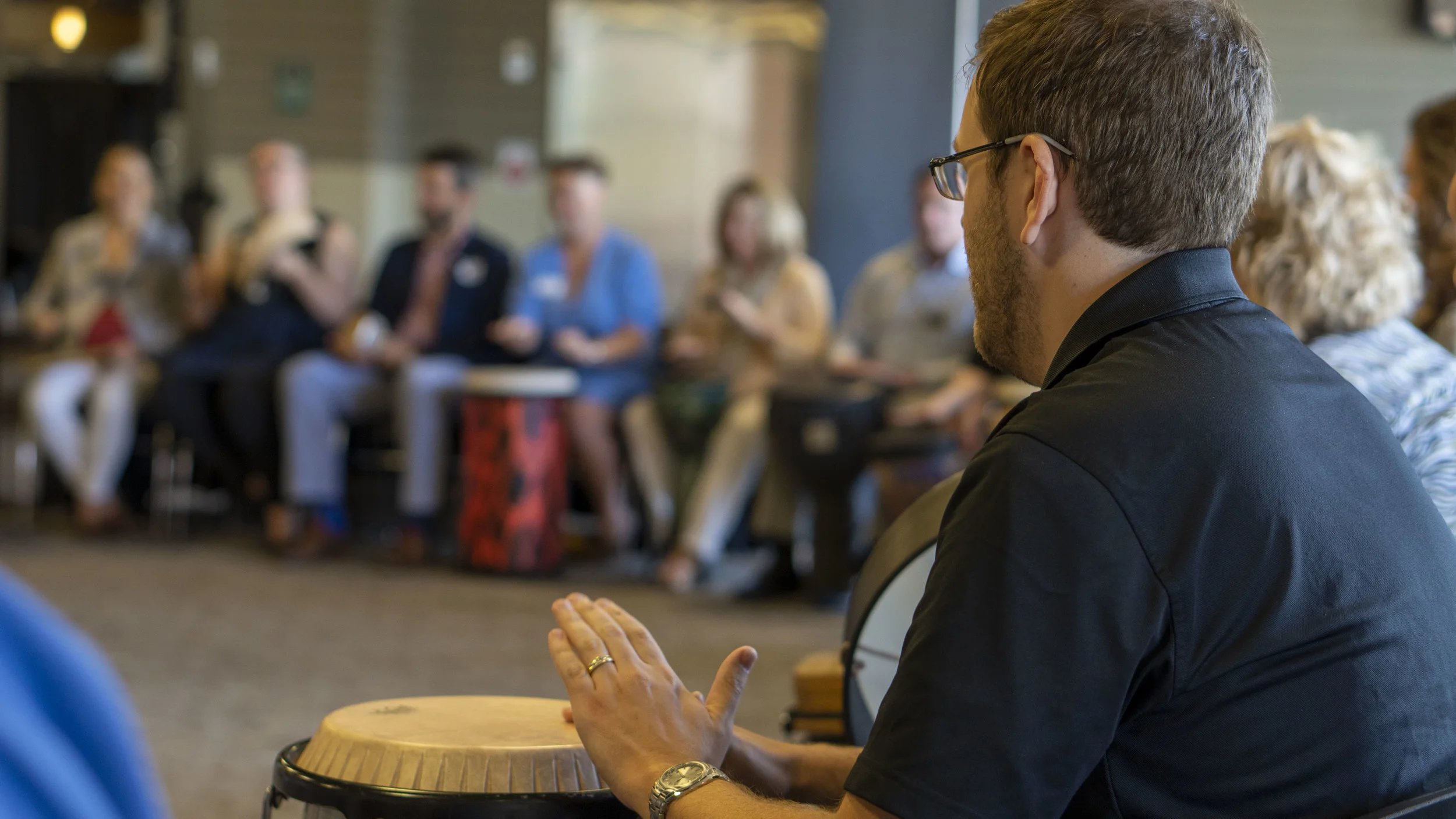The Magic and Rhythm of Nonprofit Leadership
Nonprofit leaders are problem-solvers. From strategy to operations to fundraising, an organization’s success depends on its leaders’ ability to innovate and adapt.
In 2019, Foellinger Foundation hosted an annual leadership event for graduates of the Foellinger Leadership Lab. The event, titled Beyond the Lab: Beat of a Different Drummer, encouraged participants to explore effective leadership through unconventional group activities.
Illusionist and magician Zak Mirzadeh demonstrated the power of perspective and open-mindedness. During one skit, participants expected to see a figure of Batman. Instead, Mr. Mirzadeh revealed a one-foot tall abstract metal sculpture sitting on a table. The sculpture on its own looked nothing like Batman, or any other recognizable figure. However, by shining a light through the sculpture and gradually rotating it, the bat signal, then Batman himself, came into view as a shadow on the wall.
The most impactful leaders are creative, persistent and open-minded. The ability of leaders to shift perspective goes far towards identifying solutions for their organization’s challenges. Collaborating with team members is a great way to gain new perspectives.
When Mr. Mirzadeh opened his program by saying, “We’re going to do some magic,” a Rising Leader Program graduate responded, “We do magic every day!”
Leaders set the beat
What happens when a roomful of nonprofit leaders each hold a drum and are told to pound out a rhythm matching the number of syllables in their first name? Lots of noise!
But, when the drum circle facilitator established a base rhythm first, no matter how different the drum circle members' names and their number of syllables, a coherent beat emerged as everyone’s individual rhythm aligned with the beat set by the facilitator.
Nonprofit leaders establish the ‘beat’ for their organizations. People in the organization contribute to its mission in their own ways, and effective leaders guide this individuality towards coherence and consensus.
Following the drum circle, participants had the opportunity to hear from guest speaker Ace Yakey, former vice president of community development for Lilly Endowment and seasoned mountain climber. According to Yakey, climbing the world’s tallest mountains requires the same skills as leading a nonprofit organization.
The most precarious situations on a climb happen due to multiple bad decisions, not one. This is also true in nonprofit leadership. As a leader it’s important to have a plan, but it’s equally important to remain flexible and responsive to changing conditions to avoid catastrophic mistakes.
Yakey also stressed the importance of patience on the mountain and in the journey of a nonprofit leader.
Quoting Leo Tolstoy,
“Patience is waiting. Not passively waiting. That is laziness. But to keep going when the going is hard and slow—that is patience. The two most powerful warriors are patience and time.”

